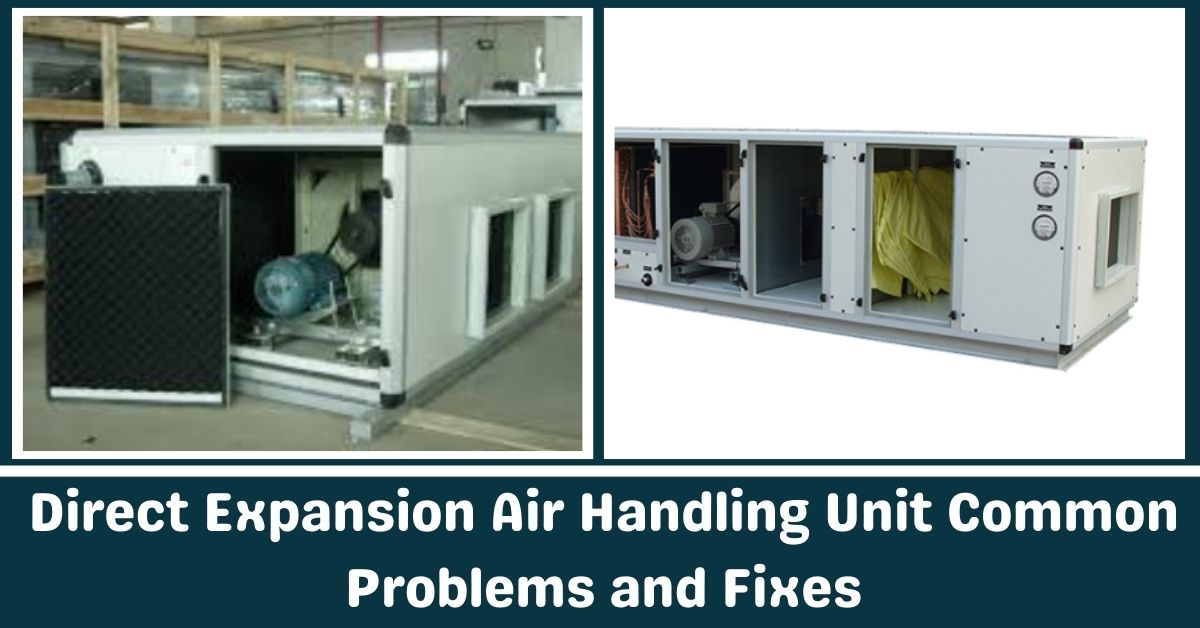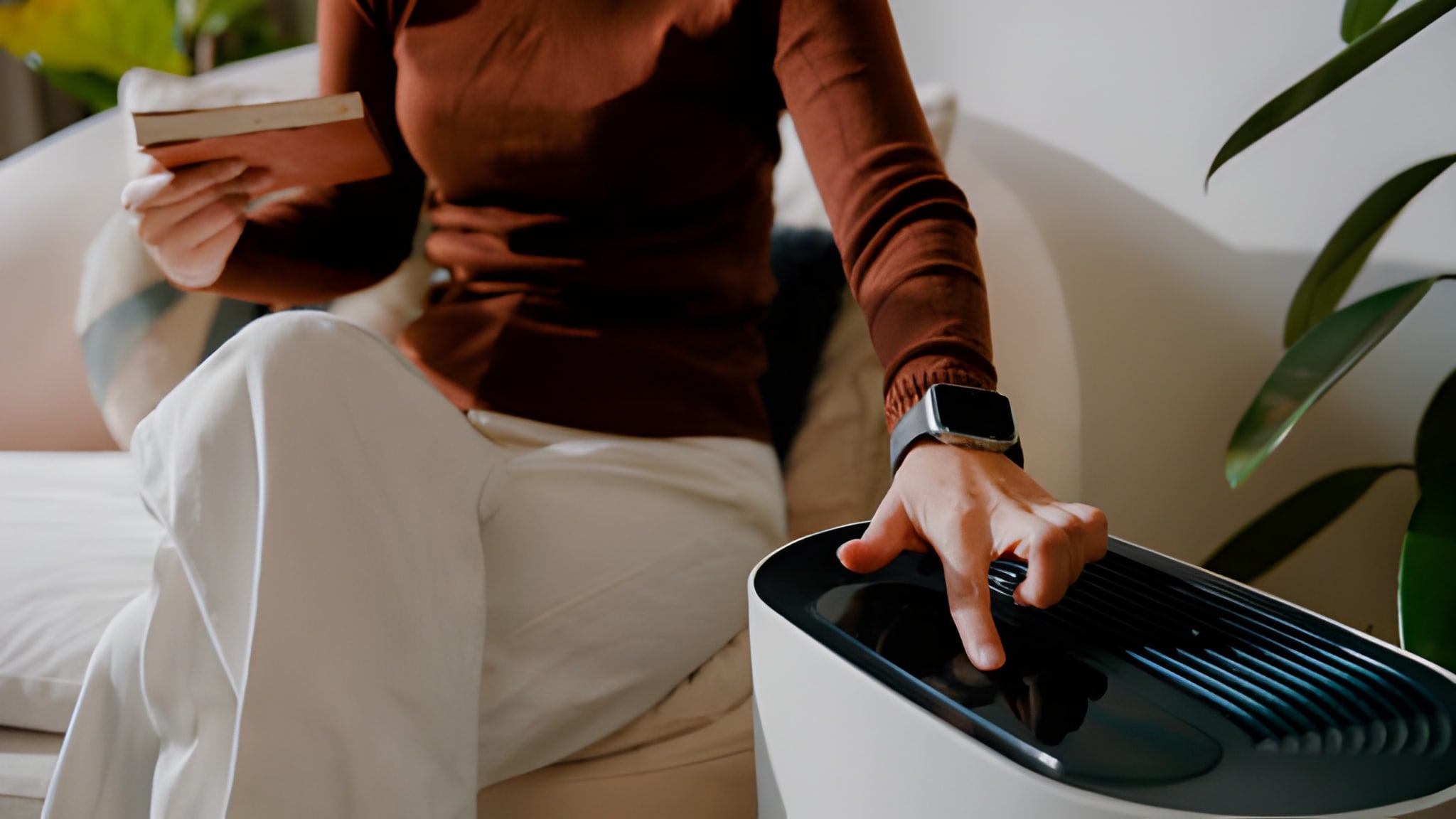Direct Expansion (DX) Air Handling Units are a crucial part of many commercial and residential HVAC systems. These units provide an energy-efficient solution for controlling the temperature and humidity within a building.
Unlike traditional air handling systems that rely on chilled water, DX units use refrigerant directly to cool or heat the air, making them more compact and cost-effective in certain settings.
However, like any mechanical system, Direct expansion air handling unit can experience a variety of problems over time, ranging from reduced airflow to refrigerant leaks and freezing coils.
These issues can not only affect the comfort of the indoor environment but can also lead to costly repairs and inefficient operation if not addressed promptly.
Maintaining a DX AHU requires a combination of regular inspections, cleaning, and troubleshooting to ensure its longevity and optimal performance.
Identifying and resolving these issues early can prevent more serious damage and help keep your energy bills under control.
Direct Expansion Air Handling Unit Common Problems and Fixes
In this guide, we will explain the most common problems that arise in DX Air Handling Units and provide practical fixes to keep your system running smoothly.

Common Problems with Direct Expansion Air Handling Units
Direct Expansion (DX) Air Handling Units are essential components in modern HVAC systems, providing efficient air conditioning by using refrigerant directly to cool or heat the air.
However, DX AHUs are not immune to common operational issues that can affect their performance. To keep a DX AHU running smoothly, it is important to identify and address these problems promptly.
Below are some of the most common issues faced by DX Air Handling Units, along with step-by-step solutions to fix them.
1. Low Airflow
Low airflow is one of the most frequent issues that Direct expansion air handling unit face. When airflow is insufficient, the air conditioning or heating system struggles to maintain the desired temperature, which affects indoor comfort levels.
There are several causes of low airflow, and understanding them is crucial for effective troubleshooting.
Causes:
- Dirty Air Filters: Air filters trap dust and debris from the air. Over time, these filters can become clogged, blocking airflow.
- Blocked or Dirty Coils: The evaporator coils can accumulate dirt and debris, preventing proper heat exchange and reducing airflow.
- Leaky Ductwork: If there are leaks in the duct system, the air can escape, leading to low airflow and reduced system efficiency.
- Fan Problems: If the fan motor or the fan itself is malfunctioning, the airflow can be compromised.
Fixes:
- Replace or Clean Air Filters: Check the filters regularly and replace them when they are dirty. Cleaning or replacing air filters is an easy and cost-effective way to restore proper airflow.
- Clean the Coils: Use a coil cleaner to remove dirt and debris from the evaporator coils. Cleaning the coils enhances heat transfer and improves airflow.
- Inspect and Seal Ducts: Look for any leaks or cracks in the ductwork and seal them with appropriate sealant. Ensuring the ducts are intact helps maintain consistent airflow.
- Fan Inspection and Replacement: Examine the fan for any signs of wear and tear. If the fan is damaged, it may need to be repaired or replaced to ensure proper airflow.
2. Frozen Coils
Frozen coils are another common problem with DX AHUs. This issue can drastically reduce the efficiency of the air handling unit, and if not addressed promptly, it may lead to more significant damage.
Causes:
- Low Refrigerant Levels: Low refrigerant causes the coils to freeze because the refrigerant cannot absorb heat efficiently.
- Poor Airflow: Insufficient airflow, caused by dirty filters, blocked vents, or a malfunctioning fan, can result in the evaporator coils freezing up.
- Faulty Thermostat: A malfunctioning thermostat may cause the system to run at excessively low temperatures, leading to ice formation on the coils.
Fixes:
- Check Refrigerant Levels: A licensed HVAC technician should check the refrigerant levels in the system. If the levels are low, the system will need to be recharged to prevent freezing.
- Clean Air Filters and Coils: Clean the air filters and coils regularly to ensure proper airflow. This can help prevent the temperature from dropping too low and causing the coils to freeze.
- Replace the Thermostat: If the thermostat is not functioning correctly, it should be replaced to regulate the system’s temperature properly.
3. Refrigerant Leaks
Refrigerant leaks are one of the most serious problems that can affect the performance of a DX AHU.
Without an adequate amount of refrigerant, the unit will be unable to cool the air effectively, resulting in poor cooling performance and increased energy consumption.
Causes:
- Aging Equipment: Over time, refrigerant lines may corrode, leading to leaks.
- Improper Installation: If the unit is not installed correctly, joints or connections may not be properly sealed, leading to refrigerant leakage.
- Physical Damage: The refrigerant lines may be damaged due to external factors, such as vibration, impacts, or environmental conditions.
Fixes:
- Locate and Repair Leaks: Use specialized tools, such as UV dye or electronic leak detectors, to pinpoint the location of the refrigerant leak. Once located, the leak should be repaired by a licensed HVAC technician.
- Recharge the System: After the leak has been repaired, the system will need to be recharged with the proper refrigerant to restore cooling efficiency.
4. Inadequate Cooling or Heating
When a DX AHU fails to provide adequate cooling or heating, it can result in an uncomfortable environment and inefficient operation.
This problem often occurs when the system cannot meet the desired temperature setpoint, either due to malfunctioning components or system design issues.
Causes:
- Improperly Sized System: If the unit is too small for the space it is supposed to cool or heat, it will not be able to maintain the desired temperature effectively.
- Faulty Compressor: The compressor is responsible for pressurizing the refrigerant. If the compressor is faulty or damaged, the system will not be able to circulate refrigerant properly.
- Clogged Condensate Drain: A blocked condensate drain can cause the system to overheat, which may lead to inefficient cooling or heating.
Fixes:
- Ensure Proper Sizing: The first step is to ensure that the Direct expansion air handling unit is the right size for the space. An HVAC professional can assess the system’s capacity and recommend a more appropriately sized unit if necessary.
- Compressor Inspection: A faulty compressor should be inspected and replaced by a professional if needed. Compressors are complex components that require professional servicing.
- Clear the Condensate Drain: Regularly inspect and clean the condensate drain to ensure that it is free from blockages, which can interfere with the unit’s operation.
5. Strange Noises
Unusual sounds coming from a DX AHU can be both disruptive and indicative of underlying problems within the system.
Identifying the source of the noise and fixing the problem is crucial to maintaining a quiet and efficient system.
Causes:
- Loose Components: If any panels, screws, or ductwork are loose, they can produce rattling noises as air flows through the system.
- Worn-out Bearings: The fan or motor bearings may wear out over time, leading to grinding or squealing sounds.
- Obstructed Airflow: Whistling or high-pitched noises are often a result of obstructed airflow due to dirty filters or blocked ducts.
Fixes:
- Tighten Loose Components: Regularly check the unit for any loose parts, including screws, panels, and ductwork. Tightening or replacing these components can eliminate rattling sounds.
- Lubricate Fan Bearings: If the fan motor bearings are causing noise, lubricating them can help reduce friction and noise. If lubrication doesn’t work, replacing the bearings may be necessary.
- Clear Obstructions: Make sure the air filters and ducts are clear of any debris or obstructions that may cause whistling or other airflow-related noises.
6. Water Leakage
Water leakage from the Direct expansion air handling unit can cause significant damage to both the system and the surrounding area.
If not dealt with quickly, water leakage can lead to mold growth, corrosion, and further system breakdowns.
Causes:
- Clogged Condensate Drain: The most common cause of water leakage is a blocked condensate drain. When the drain line is obstructed, water accumulates and leaks out of the unit.
- Improper Insulation: If the cooling coils are not adequately insulated, condensation may form and drip from the unit.
- Damaged Drain Pan: A cracked or damaged drain pan can also cause water leakage by preventing proper water drainage.
Fixes:
- Clear the Drain Line: Regularly check and clean the condensate drain to ensure water flows freely. A simple cleaning with a vacuum or wire brush can prevent clogging.
- Ensure Proper Insulation: Make sure the coils are properly insulated to prevent condensation buildup and dripping.
- Replace Damaged Drain Pan: If the drain pan is damaged, it should be replaced to ensure proper water drainage and prevent leaks.
7. System Short Cycling
Short cycling refers to the frequent on-off cycling of the DX AHU without completing a full cooling or heating cycle. This is a common issue that can lead to unnecessary wear on the system and inefficient operation.
Causes:
- Dirty Air Filters: Dirty air filters can cause the system to overheat and short cycle as it struggles to maintain the desired temperature.
- Oversized System: If the DX AHU is too large for the space, it may cool or heat the area too quickly and shut off prematurely, only to turn back on shortly after.
- Faulty Thermostat: A malfunctioning thermostat can misread the temperature and cause the system to short cycle, turning on and off too frequently.
Fixes:
- Clean or Replace Air Filters: Check and clean or replace the air filters to ensure proper airflow. This helps prevent the system from overheating and short cycling.
- Ensure Proper Sizing: If the system is too large for the space, it may need to be replaced with a properly sized unit.
- Replace the Thermostat: If the thermostat is malfunctioning, replacing it with a new one can help regulate the temperature and prevent short cycling.
Conclusion
Direct Expansion Air Handling Units are complex systems that play a critical role in maintaining indoor comfort.
However, like any mechanical equipment, they can experience a range of common issues such as low airflow, frozen coils, refrigerant leaks, inadequate heating or cooling, strange noises, water leakage, and system short cycling.
Understanding the causes of these problems and implementing the appropriate fixes can go a long way in preventing system failure, reducing energy consumption, and extending the lifespan of the unit.
Regular maintenance, such as cleaning air filters, inspecting refrigerant levels, and clearing condensate drains, is essential in keeping the DX AHU running efficiently.
Identifying problems early and addressing them promptly can help avoid costly repairs and maintain optimal performance.
Direct expansion air handling unitWhether it’s ensuring proper airflow, fixing leaks, or replacing worn-out components, staying proactive with system upkeep will save both time and money in the long run.





